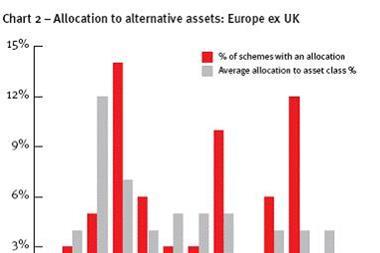The two ‘r’ words represent a twin challenge to risk managers and their captives this year, reports Graham Buck
With indicators suggesting that the competitive market conditions of the past few years have ended thanks to the arrival of recession, many risk managers will again be evaluating the benefits of a captive. However, the pace of new regulations emanating from Brussels shows no sign of letting up; indeed, as Marie-Gemma Dequae, president of the Federation of European Risk Management Associations recently observed, if anything it appears to be accelerating.
The most obvious deterrent to any European company considering the formation of a captive is that the ‘light touch’ regulation they were traditionally able to benefit from looks set to become a thing of the past. Looming on the horizon is the planned introduction in 2012 of the Solvency II regime, which will transform Europe’s regulatory regime for insurers and promises to revise rules determining the amount of capital they need to hold so it is more commensurate with the risks that they face.
There is widespread apprehension among risk managers over the treatment of captives under Solvency II, which, in its initial drafting stages, appeared more suited to dealing with the major multi-lines insurers rather than smaller businesses with captive operations. Although revisions are now likely, these concerns manifested themselves last August with the formation of the European Captive Insurance and Reinsurance Owners Association (ECIROA).
As its chairman Günter Dröse, who is also global head of corporate insurance for Deutsche Bank explains, the aim of the association is to enable captive owners in Europe to have more of a say with the regulators of the European Commission and the Committee of European Insurance and Occupational Pensions Supervisors (CEIOPS) in the drafting of new frameworks and guidelines. ECIROA has already attracted a number of heavyweight names, including ArcelorMittal, HSBC, Akzo Nobel, BMW, BT Group, Michelin, Bayer and Heineken. ‘The association wants captives that are different to multi-line insurers to be able to succeed in the future without suffering the burden of huge workloads and redundant requirements,’ says Dröse.
He believes that captive managers have previously had little real impact on the decisions of regulatory bodies. ‘Informal meetings are nice, but they have little effect. You need to have a legal body and a proper association in order to be recognised.’ This was evident in the drafting of Basle II, when the impact of insurance products and policy on operational risk received insufficient attention in meetings with regulators. Regulators ‘tend not to be that well informed on what it is that captives are doing, so it’s good to help them with their understanding,’ he adds.
However, Dröse admits that ECIROA, with only a few months of existence as yet, got off to a late start and is keen for the association to recruit additional names. ‘We hope and expect to attract more UK members in particular, as we can offer them a better EC-wide view and insight into how to structure and handle captives,’ he adds.
Feeling the pinch
In the past 18 months the deepening effects of the credit crunch have begun to impact on captives, which are being affected by the adverse performance and poor liquidity of their investment portfolios, says Merise Wheatley, managing director of Heath Lambert's insurance management division
She explains that premiums for long tail liability risks such as employer’s liability and worker’s compensation, motor third party and general liability usually include a discount for assumed investment returns over the pay out period of the policy. Low or negative returns create the risk of insufficient funds being available to pay claims.
‘In addition, the markets for investments that were previously considered reasonably liquid have in many cases disappeared, leaving captives with assets that they cannot sell except at significant losses, even though the credit ratings of those assets are still acceptable,’ she adds.
‘For captives that matched their asset and liability profile and have cash or a stream of investments maturing to meet insurance liabilities this should not be a problem, but where the maturity profile of assets is longer than the payout profile of the claims they may be forced to sell assets at a loss or to borrow cash from the bank or their parent to pay claims.’
“Looming on the horizon is the planned introduction in 2012 of the Solvency II regime.
Wheatley reports that where assets are held as security within security trust or security interest agreements, insurers now require the investments to be a higher quality than before or want certain assets that have been recently downgraded recently to be replaced with others of a higher grade. This creates further problems where no ready market exists for these unwanted assets.
So captives are revising their investment strategies, going for high quality, short term money market type investments and keeping their medium term cashflow requirements under close scrutiny to ensure that they can pay claims as and when required.
At the same time, as their parent companies are feeling the impact of the credit crunch and the credit drought so captives are encountering growing pressure to provide loans or to dividend back surplus capital to support the core business. ‘Loans are better for captives than dividends as they can be returned to the captive in the future as conditions improve,’ explains Wheatley. ‘But they are generally not allowable for solvency purposes, or may be allowed by the regulator to a limited extent provided that the parent's financial standing is considered adequate.’
This makes it essential for captive boards to demonstrate that they are properly assessing and quantifying the risks inherent in making parent company loans. They must address the prospective impact on the captive's solvency of the parent's failure, and whether the loans can be repaid on demand if the captive needs to pay claims.
‘From the risk manager's perspective, the need for cash in the business may make it more difficult to win the case for using a captive to insure deductibles, which may be perceived as tying up cash prematurely before it is needed to pay claims,’ Wheatley adds.
‘The risk manager may instead opt to retain the risk within the parent company, but there are risks in doing this in an informal structure and benefits for the risk manager that may be lost by not using a captive vehicle.’
A taxing issue
In the UK, the tax status of captives has been a hot topic since the September 2006 ruling in favour of Cadbury Schweppes, when the European Court of Justice decided that UK rules on controlled foreign corporations (CFCs), enabling Britain to tax foreign subsidiaries as if they were UK-resident, could only be applied to wholly artificial companies with no real economic activity.
There was a further setback for HM Revenue & Customs last July when the High Court ruled that its should end a six year battle with Vodafone over the telecom giant’s use of a Luxembourg subsidiary as a holding company for European investments.
The tax issue will continue to be a contentious one, says BT Group’s risk financing manager, Chris Maurice. European Union jurisdiction will soon offer advantages over non-EU regions and some captives may move their operations to the EU to take advantage of tax incentives. Locations that are in the European Economic Area (EEA) but not the EU, such as Gibraltar, will also benefit.
‘But it takes time for Customs & Excise to accept the situation,’ says Maurice. ‘It may take as much as five years to understand what the response of non-EU/EA jurisdictions will be; some might decide to join the EA so they can match its competitive advantage,’
“The tax issue will continue to be a contentious one.
However, he adds that a mass relocation of captives is unlikely. ‘If you don’t actually need to be that sophisticated in your tax planning, there aren’t actually any great advantages in moving.’
Maurice describes Independent Cell Companies (ICCs), which were introduced by Guernsey in 2006, as an ‘interesting development’ and suggests they may prove to be a tool that can be used in conjunction with an existing captive.
‘Some companies may, for example, have a captive in Guernsey and an independent cell company in Malta. I imagine that a number of companies with captives are reviewing what it does and how it does it, to see if they would benefit from an ICC.’
Malta makes its mark
Malta appears to lead as the most promising of the newer captive locations confirms Peter Walker, chief executive of HSBC Insurance Management. He says that the group lacked an EU captive management presence a few years ago and reviewed potential locations such as Dublin, Gibraltar and Luxembourg. But Malta came out ahead and HSBC set up its operation there three years ago.
‘Malta has proved to be a success story for us and we’ve been able to develop the business,’ he reports. ‘In the medium- to long-term we expect it to develop as an important centre not only for captives, but also for insurance and reinsurance companies whose clients want direct access into the UK insurance market. Freedom of services enables them to write business directly into the UK.
‘The Malta Financial Services Authority is an extremely competent regulator and is accessible and ready to listen to proposals. Although subject to the same EU legislation it is possibly more amenable than some other regulators.’ For captive managers, the island also offers lower costs than Dublin and a superior infrastructure to Gibraltar.
Further afield, Walker says that Dubai, Qatar and Bahrain are keenly aware of the opportunities offered by Middle East business. He regards Dubai Financial Centre as ahead of the game, with a number of companies already having set up insurance management companies within the DFC and several few captives located there.
Finally, looking at the year ahead he views 2009 as presenting companies with a paradox.
‘There are signs that the insurance market is again beginning on another hard cycle – and in hard markets the rationale for companies to retain more of their risk tends to increase. But this time around there is a downside because of the credit crunch, which means that it will be harder to obtain the necessary capital to establish a captive.’ Persuading finance directors to increase capitalisations for captives may prove the risk manager’s toughest challenge in the year ahead.
Postscript
Graham Buck is a freelance writer


















